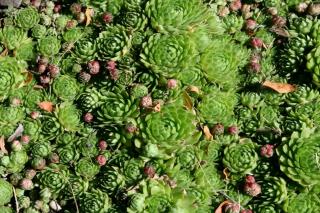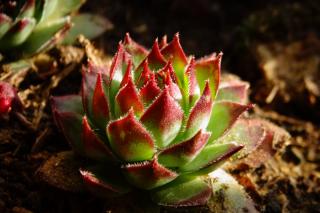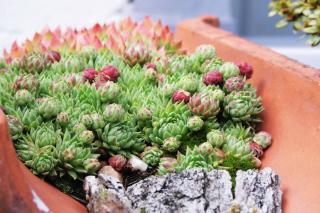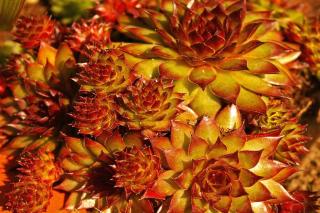

With striking designer-like leaves, cute and colorful rosettes, houseleek (or Sempervivum) is among those few plants that require neither care nor water. Amazing, isn’t it?
“Sempervivum” means immortal. It’s a small succulent plant, a perennial that grows on rocks, atop walls, and in arid deserts…

Houseleek is more than just a filler plant to populate areas where nothing else will grow, its an opportunity to create a plant landscape that knows no restrictions! It only needs minimal water. Even the occasional puddle might lead to a rotten death! Optimal, perfect drainage is it’s only requirement.
To propagate, simply plop a rosette with a root on a rock with a handful of dirt, and it’ll find ways to hang on.
In a pot that drains well (with a hole underneath), it isn’t very difficult to recreate the perfect growing substrate: mix regular dirt or soil to an equal part of large gravel (or pozzolana, or sand), that’s it!

From the more than 4000 species that exist, a majority will have either green, red or pink rosettes of all sizes, but a few stand out with yellow and even chocolatey-purple colors. Spectacular!
Summer blooming adds a touch of pink or yellow color, and often brings welcome vertical lines in an often flat-growing plant. With a few delicate snips of the pruner, remove the floral scapes after the blooming and before winter. As for winter, no need to worry: houseleek doesn’t fear the cold as long at it’s dry, it can cope with temperatures as low as 5°F (-15°C).

The Chick Charms Gold® Nugget is unique in that it shows its colors in Winter, unlike the other more traditional varieties that turn red in Summer.

Claire Lelong-Lehoang